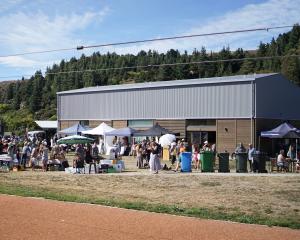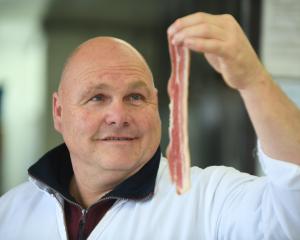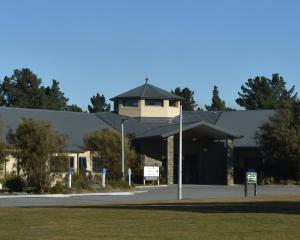
Following the fatal crash in October 2018 of unlicensed Wanaka speed flyer James William Taylor, also known as Jimmy Keane, Wanaka bureau chief Mark Price asked experienced speed flyer Mal Haskins about the sport. Mr Haskins took his first paragliding flight as a tandem passenger in 1990, and flew off the top of Mt Cook in 2012. His advice: start out slow.
What made you decide to do it?
I always had dreams of flight; of wanting to be able to climb mountains and fly from them. I was able to purchase a very old paraglider that I could ground-handle and practise with in parks — not fly with. Ground-handling is a key factor in learning how to control your wing.

Amazing, although they were only on training hills and with flight durations of less than 30 seconds in locations that had very few hazards. These first steps were crucial for safe progression into the sport.
How did you develop your paragliding skills and over what length of time?
I spent a very long time ground-handling before I ever flew. I also had amazing mentors and the support of the paragliding community. Going through a paragliding school is definitely the way to learn.
Do speed wings and paragliders have any characteristics in common?
Paragliders and speed wings both have the same control characteristics ... and are both able to be launched from the ground. Speed wings are designed for descent whereas paragliding is about staying high, gaining lift and or going cross-country. Paragliders typically launch more slowly. Speed wings launch very quickly, fly very fast, require a good, long, safe area, free of obstacles, and ideally, calm conditions.
What did you need to learn before you took your first speed flying flight?
I had to understand how the canopy launched and felt in the air and how it responded to control inputs. I needed to understand how long it would take me to get airborne and also to get an idea of the glide ratio of the wing — how far you go forward over the ground compared to how much you go down or sink. I spent a fair bit of time ground handling the wing and practise-launching the wing before I flew it. I then flew the wing on very short flights off a very small hill with no obstacles.
Was your preparation sufficient?
I feel my preparation was 100% sufficient. While there was nobody else at the time really involved in the sport the only real place I could see what was going on was via the internet and talking to people who had opened up the sport in Europe. Unlike today, there was no speed flying community and the concept of speed flying was not well understood by the paragliding community. The approach I took was slow — slow to launch, slow to get myself flying close to the ground and ensuring I had very wide safety margins in terms of weather and having a very clear idea of my landing options.
What sort of characteristics or personality is required to be a safe speed flyer?
You need to be honest and open with yourself about your own skill level and knowledge and not allow yourself to be caught up in the hype of other people flying with you. Safe speed wing pilots understand it is a dangerous sport. I consider it to be more dangerous than basejumping and wingsuit basejumping, because it is a sport that is so much easier to access. People may not understand just how dangerous it is and advance too quickly into terrain and areas that are not safe or they will fly without the understanding of weather and local conditions.
Talk us through a typical flight?
I like to envision my launch, flight and landing well before I physically do it. I will check my landing area before I go up a hill. I check the weather forecast and study the conditions. As I lay out my glider, I work out where my abort point is. Some locations may only allow three running steps.
As I launch, I feel how the glider is responding, does it have positive inflation, is it heading where I want it to go, or is there anything wrong in the feel of the glider?
If there is, I abort my launch. Having a clear understanding of when not to launch or when to abort your launch is much more important that getting into the sky. Once in the sky I become quite focused on my flight path while ensuring I keep a series of "windows" open so that if I need to I can clear terrain and fly away into open airspace. As I am flying I am thinking and projecting myself ahead 200-300m so I am not surprised by the terrain obstacles or other aircraft.
What was the experience of flying off the top of Mt Cook like?
I flew off Aoraki Mt Cook on December 12, 2012. The climb took about five hours and getting ready to launch took about an hour. The conditions for ski-launching were not ideal as there was a fairly firm crust on the snow. I had to stomp out and break a 40m runway so I didn’t break through, catch my skis as I launched and tumble down the mountain. I was actually quite nervous but fear helps me to focus. The flight followed my pre-thought-out flight path but I kept myself fairly clear of the east face before landing at the base of the Linda Glacier. I had a fair bit of adrenaline reaction and it was certainly one of the most incredible flights I’ve had.
How close to the ground have you come during a speed flight?
While speed riding it’s common to actually have your skis on the snow. With speed flying I may often be less than 30cm from the ground or be flying with the tussock whipping at my feet. It’s very much a flow experience, where all of your senses and focus is dialled down to the now and there are no distractions intruding into your mind. In many ways it feels very meditative.
Have you ever had a moment when you thought, maybe, you might not survive?
No. I’ve never thought I would or could be killed but I have been injured. I have had, unfortunately, to deal with a number of fatal accidents involving speed flying that could have been avoided if the pilots had taken more time to consider a range of factors.
What would your advice be to anyone who sees a speed flying video and decides they want to give it a try?
Do not try to do this sport in isolation or believe anybody who says the sport is safe. The only way you can fly a speed wing legally in New Zealand is to have an open paragliding licence (PG2). It’s a very fast sport. Take your time. Develop your skills and experience slowly.
How safe, is speed flying compared with paragliding?
Speed flying is a very unforgiving and risky sport where the dangers and hazards are not often able to be seen or recognised until it is too late. A slow and measured approach needs to be taken to learning and each individual flight. Flying under the radar and not connecting with the wider flying community is a pathway to getting seriously injured or killed.
What speed flying feat would appeal to you in future?
In 2011, I made an attempt to fly from Mt Manaslu (8154m), in the Himalayas, but the weather conditions were not favourable. The highest I’ve successfully flown from is 6350m. I’d like to have another go at speed flying or speed riding off a peak above 8000m.











